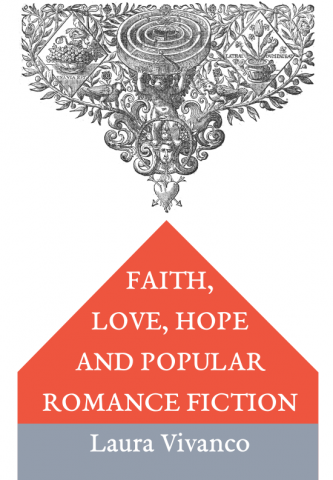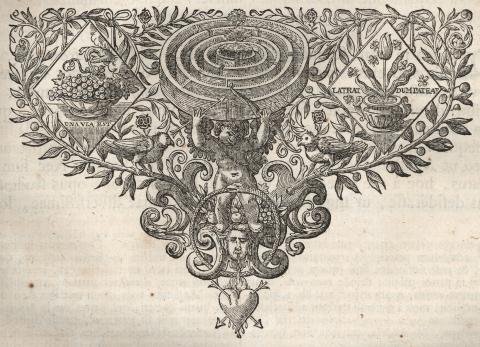You can download a free pdf version of the book here or, if you'd rather read the book online, you can either proceed directly to the Introduction or stay on this page for a discussion of my cover image.
A paperback edition of the book can be purchased directly from Lulu.com or from other sites e.g. Amazon (UK) (US).
If you prefer an ebook format other than the free pdf available here, these are available from many commercial sites, including Kobo. However, although these versions will be relatively low-priced, I used Lulu as a distributor so couldn't set them up to be completely free.
The image comes from an eighteenth-century edition of Quintilian’s Institutio oratoria, which I haven't read, so I don't know how the image related to its content.
In this new context, however, I'd translate "una via est, latrat dum pateat" as "there is one path; it shouts out as it stands open." That seems to describe romance novels pretty well: they're not exactly quiet about their belief in love being the way to happiness. There's a heart at the foot of the design and the labyrinth is held aloft by Cupid. The symbolism of the heart and Cupid are obvious. For my purposes, the labyrinth reflects that fact that, in romance novels at least, the path to true love is not without its complications. It's also the case that labyrinths have been used to spur spiritual growth. The serpent eating its own tail is Ouroboros and represents an eternal cycle of renewal. In this context I find that apt with respect to both love (as depicted in romance novels) and the genre itself, which constantly repeats and renews itself. According to Lucy Hooper's The Lady's Book of Flowers and Poetry; to which are added, a Botanical Introduction, a Complete Floral Dictionary, and a Chapter on Plants in Rooms (1845), a tulip is a "declaration of love" (231). In my mind the bees (on the right, flying around a tulip) represent the hard work that many would argue is needed before relationships can truly flower and, looking towards the grapes on the left, bear fruit. Since the pair of birds seem to be resting on olive branches I've decided they can represent the belief (expressed in a novella by Mary Kirk), that "only when we are guided by love do we find true happiness and peace" (223).


